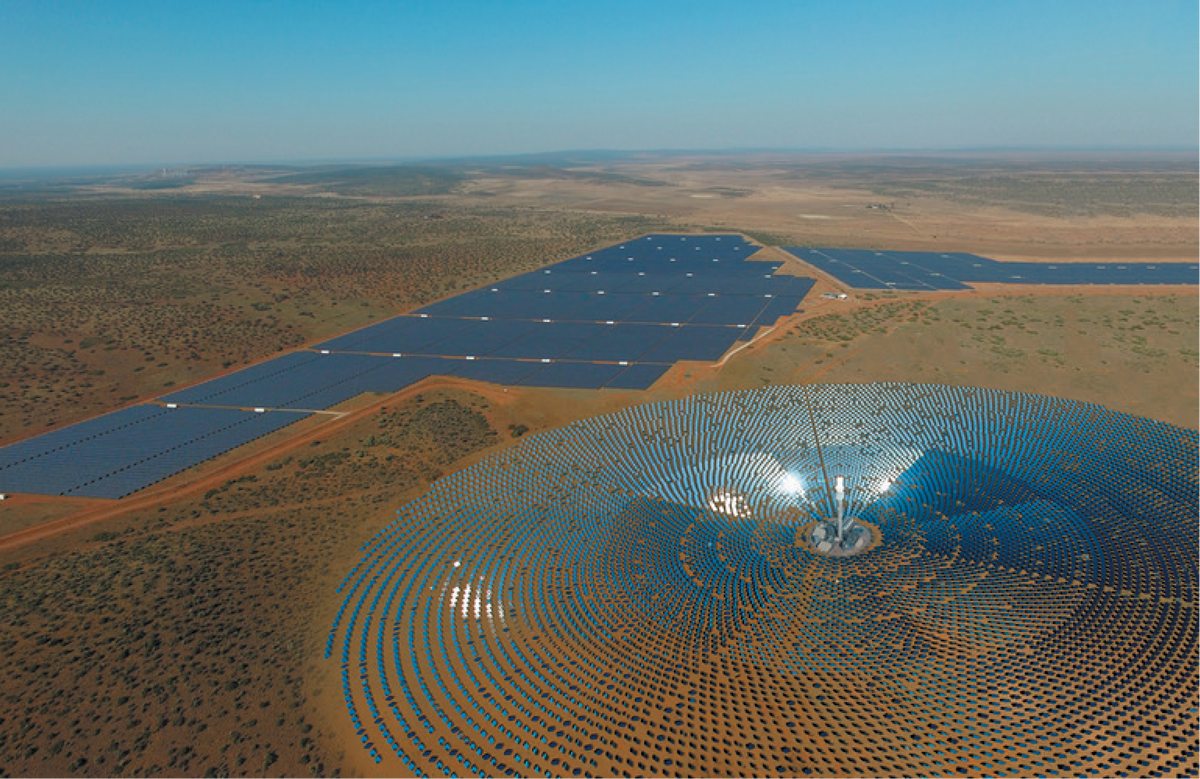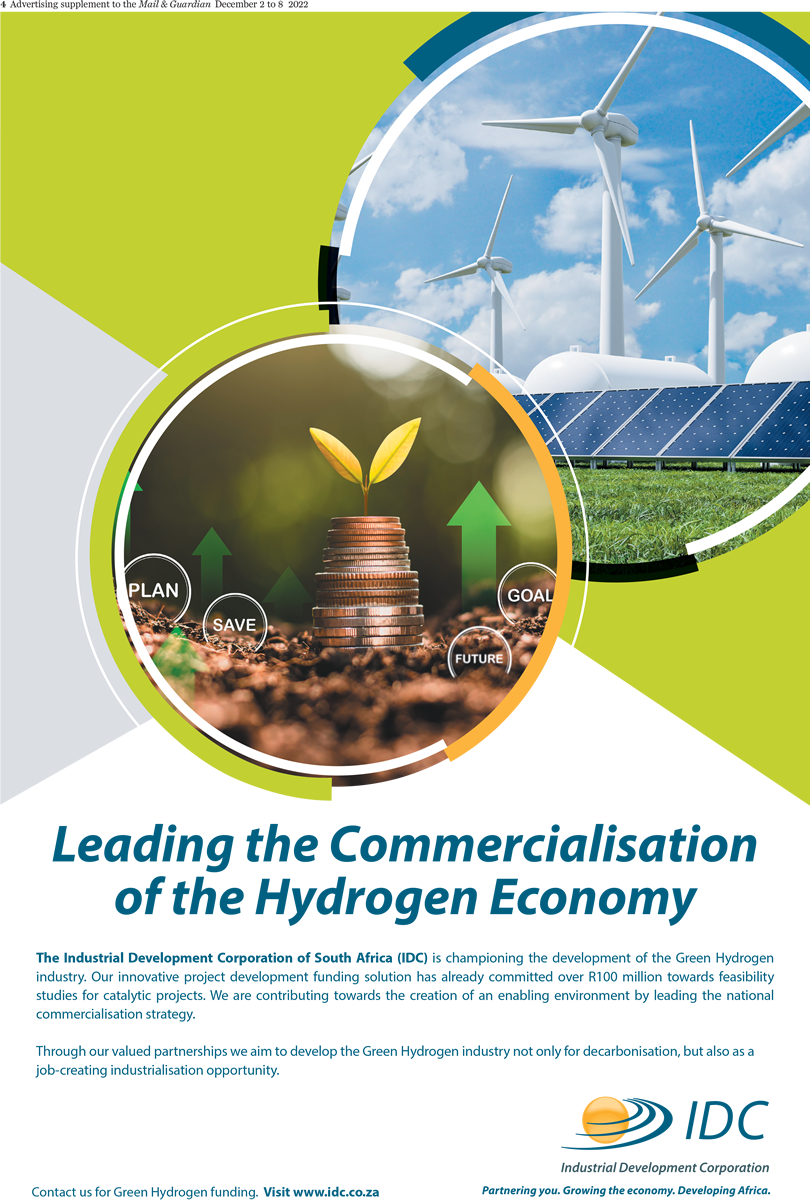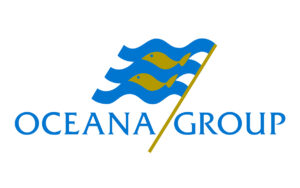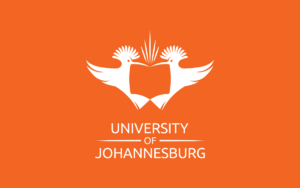The IDC is leading the drive to commercialisation of the local green hydrogen economy
The recent COP27 held in Sharm El Sheikh, Egypt saw an historic announcement on the commitment of developed nations to create a fund to support loss and damage in emerging economies. At the same time, it was apparent that not enough has been achieved in the areas of mitigation and adaptation.
With Africa set to warm twice more than the global average, the threat to the continent’s economic and social stability is significant. Yet at the same time, debate around the need to balance the energy transition with associated risks such as energy security and poverty alleviation continues. South Africa has experienced the impact of climate change in the form of flooding that ravaged KwaZulu-Natal and other parts of the country. More than 450 people died while many others lost their homes as well businesses due to severe flooding. More than 830 companies based in Durban and surrounding areas were impacted, costing the province approximately R7 billion. In other regions in South Africa the threat of continued drought is impacting livelihoods, agricultural production and economic development.
The continued load-shedding poses a major risk to the country’s economic prospects, inhibiting the capacity to create jobs, further eroding our fight against the triple threat of poverty, inequality and unemployment.
On a positive trajectory, South Africa recently recorded two landmark achievements, the Just Transition Framework facilitated by the Presidential Climate Commission (PCC) and the Just Energy Transition Investment Plan (JET-IP) which provides clarity and direction to the country’s transition ambitions. The JET-IP presents a tangible decarbonisation approach across three priority pathways: electricity, new energy vehicles and green hydrogen. It highlights investment opportunities over the next five years, which aligns to the period of the funding commitments from the International Partner Group (IPG) as announced at COP26.

Charging infrastructure needs to be put in place to facilitate the local adoption of New Electric Vehicles.
The conversion of South Africa’s automotive production capacity from internal combustion engines (ICE) to new energy vehicles is critical to support the current export capability of this important sector. Sixty percent of our automotive sector manufacturing is being exported to the European Union and United Kingdom, and these countries plan to place restrictions on ICE vehicle imports in the near future. This poses a risk to the more than 450 000 people employed in the sector. Attracting new energy vehicle (NEV) production and assembly in South Africa to sustain this sector and skills is a priority. In addition, the unlocking of the minerals value chain and battery production and recycling is a critical priority. This will further enhance the effectiveness of e-mobility in our public transport systems, taxis and last-mile logistics and will also play a role in reducing emissions and creating more industrialisation opportunities.
The Industrial Development Corporation of South Africa (IDC) has been leading the work on the green hydrogen economy, building off the strong foundation of the work undertaken by the Department of Science and Innovation (DSI) with respect to its Hydrogen South Africa (HySA) programme and the development and publication of the Hydrogen Society Road Map (HSRM). In June 2021 the Minister of Trade, Industry and Competition established the Green Hydrogen (GH2) Commercialisation Panel, with the IDC acting as Chair and Secretariat. The Panel consists of private and public sector champions in the potential green hydrogen value chain.

IDC COO Joanne Bate
The objective of the Panel is to develop a South African Green Hydrogen Commercialisation Strategy and Action Plan. The first five years of the plan are captured in the Just Energy Transition Investment Plan and the full plan has recently been approved by Cabinet. Green Hydrogen is not only a new energy carrier but presents the opportunity to decarbonise our hard-to-abate sectors, ensuring that our heavy industrial sectors, including the petro-chemicals, steel and cement industries, continue to retain and sustain jobs.
We are thrilled to see the fruits of a collaborative effort in the development of this plan, and Cabinet’s approval of the commercialisation plan paves the way for the plan to be released for public comment. This is a significant milestone on our long journey.
Bate is the Chief Operations Officer at the Industrial Development Corporation. She is the chairperson of the dtic Green Hydrogen Commercialisation Panel and a Commissioner on the Presidential Climate Commission. She writes in her own capacity.
A R400m boost from Germany to develop SA’s green hydrogen economy
The German KfW Development Bank has signed a memorandum of understanding (MOU) with the Industrial Development Corporation (IDC), in which the Frankfurt-based lender will provide grant funding to support the development of South Africa’s green hydrogen economy and help accelerate the country’s transition to renewable energy.
The parties signed the MOU during the recent SA Green Hydrogen Summit held in Cape Town from 28-30 November 2022. The IDC has been mandated by the government to spearhead the development of South Africa’s green hydrogen economy. “This grant facility is a gamechanger, especially given the exciting industrialisation opportunity presented by the green hydrogen economy. Collaboration between different development finance institutions in providing blended finance solutions is a key in the development of catalytic green hydrogen projects,” said IDC Chief Operations Officer Joanne Bate.
Funding constraints are just one of the impediments to South Africa’s execution of its Just Energy Transition Investment plan (JET-IP). Some of the solutions to overcoming this challenge include blended financing, which spreads the risk across governments, asset owners, development finance institutions and private sector investors, among others.
As part of this agreement, the parties will conclude an agreement which will enable the IDC to manage €23 million in grant funds from the German government. The IDC is playing a leading role in the development of a Green Hydrogen Commercialisation Strategy (GHCS) for South Africa through its chairmanship and secretariat of the Green Hydrogen Commercialisation Panel.
South Africa wants to harness its abundant supplies of platinum and sun and wind energy to establish a green hydrogen value chain and become an exporter of the green energy source. Infrastructure SA, a programme within the ministry of public works, has since identified a pipeline of 19 green hydrogen projects valued at more than R300 billion.
The sourcing and structuring of different financing instruments — namely grants, concessional debt and price subsidies, also known as contract for differences from various financing entities — is critical to the success of the GHCS. The demand for hydrogen reached an estimated 87 million tonnes in 2020 and is expected to grow to between 500 million and 680 million tonnes by 2050. Of this, the export market will account for 100-180 million tonnes.
KfW representative Babette Stein von Kamienski, Head of Division Infrastructure Southern Africa, commended the IDC for its role and the government’s efforts in helping South Africa to adopt a sustainable but Just Energy Transition: “KfW will continue to support the IDC in its mandate to promote the market development of a green hydrogen economy in South Africa. We hope this facility will help the IDC to address the funding gap for projects that have identified opportunities in South Africa’s decarbonisation efforts but are constrained by funding challenges.”
Green hydrogen is the future
South Africa’s green hydrogen economy – a decarbonisation and industrialisation opportunity\
As countries across the globe begin to intensify their efforts to decarbonise their economies, green hydrogen is projected to play a critical role in the energy transition. As an alternative to fossil fuels, it is increasingly being promoted as an energy carrier that can be used to tackle climate change, and in the process help many economies to reduce their CO2 emissions.
The urgency to develop South Africa’s green hydrogen economy is being driven largely by the country’s efforts to decarbonise its economy, and to also address the energy deficit experienced on a daily basis. It is thus encouraging that the importance of developing a fully-fledged green hydrogen economy was strongly supported by the stakeholders attending the Green Hydrogen Summit held in Cape Town from 28-30 November 2022.
Of significance, the summit provided an opportunity for South Africa to market itself as a large-scale, low-cost green hydrogen production hub. As the entity mandated by government to drive the commercialisation of the local green hydrogen economy, the Industrial Development Corporation (IDC) is using its expertise in industry planning and project development to help unlock the potential of the local green economy. A key attribute of the IDC — evident in its mandate and objective to develop South Africa’s renewable industry — is its capacity to de-risk new industries. Since we ventured into this space in 2012, our exposure to renewable energy generation has grown to R15.8 billion.
To date, our investments in renewable energy, notably in Renewable Energy Independent Power Producer Procurement Programme Rounds 1 and 2 have helped to add 900MW of power to the national grid. In the process, this created about 8 000 jobs spread across the Northern Cape, Western Cape, North West and Eastern Cape. The Northern Cape, with excellent renewable energy resources, is the biggest beneficiary of IDC’s investment, with a combined capacity of 486MW and R2.5 billion in the combined purchase price for community shareholding in 15 projects.
The IDC is at the centre of driving South Africa’s ambitious commercialisation of the green hydrogen economy. For us, the potential of this sector extends beyond just the role that green hydrogen can play in the decarbonisation of the local economy. Green hydrogen also provides us with a great opportunity to industrialise our economy. Compared to other countries, South Africa has a structural competitive advantage in producing green hydrogen, stemming from the country’s large-scale renewable energy potential and unique expertise and technology linked to our existing chemical industry.
The green hydrogen economy is being developed on the back of strong and diverse demand opportunities. Firstly, the domestic industrial use of green hydrogen for hard-toabate sectors such as the steel and chemical sector, and secondly, the use of green hydrogen in mobility applications such as heavy vehicles, aviation and rail. Thirdly, the export market, where typically green ammonia is exported. Significant interest has been shown by countries in Europe as well as the Far East to source green ammonia (a carrier of green hydrogen) from geographically diverse sources.
We would like to optimise the opportunity for the benefit of South Africa. Indeed, the green hydrogen value chain presents us with opportunities for localisation — especially as this relates to the beneficiation of platinum group metals, equipment and components that are used in the manufacturing of green hydrogen.

Rian Coetzee, Head of Industry Planning and Project Development at the IDC
To us, the development of green hydrogen industries also presents new economic skills, employment and empowerment opportunities for South Africans. That said, the task at hand — developing the local green hydrogen economy — is one that we have embraced with much gusto.
As a development finance institution, our role in the development of this nascent industry is beyond mere financing. We are playing a much bigger role and are proactive in industry planning. As chair and secretary of the DTIC’s Green Hydrogen Commercialisation Panel, the corporation is actively leading the role in developing the commercialisation plan. Through this plan, we have factored in the need to balance long-term strategic thinking and planning, and the immediate implementation of shorter-term opportunities.
A key premise of its development includes reduced costs of renewable energy and electrolysis over time. In order to create a bridge to future competitiveness with fossil fuels, partnerships are required to solve these shorter term challenges. The IDC is creating risk-sharing partnerships in a variety of areas.
Financial partnerships are critical to developing the blended financing products that are required to leverage commercial funding into these projects, as exemplified in the recently signed memorandum of agreement signed between the IDC and the German development bank, KfW. Technical partnerships will become a constant feature as we start developing and implementing such projects. To date, the IDC has concluded partnerships with companies such as Sasol and Saudi Arabian conglomerate, Acwa.
It is critical that we begin to attract other equity partners to come on board, more so granted that such undertakings are capital intensive. Thus far, the IDC has brought on board other players in the development of a number of catalytic green hydrogen projects. The corporation has so far committed over R100 million of project development funding to a number of projects to conduct feasibility studies, and is currently reviewing a strong pipeline of more project opportunities.
As an industrial development bank, we have differentiated ourselves in playing a hands-on role in the early-stage project development and ultimate project finance. We are using the development of these pilot projects as real case studies to de-bottleneck industry constraints. For us, the first Green Hydrogen Summit provided a great platform to bring all the stakeholders in the green hydrogen industry together. Most importantly, the commitment from cross sections of stakeholders bodes well for the development of the green hydrogen economy.
Seven key pillars and enablers of commercialisation of the GH economy :
- Fast-track catalytic projects – Expedite the project development of the identified catalytic projects to meet short-term production targets and incorporate lessons learnt to ramp up towards the long-term targets.
- Secure funding – “Crowd in” and secure funding from various sources and in various forms, including grants, concessional debt and contract for differences.
- Target export market – Target exports of green hydrogen (GH2) and green chemicals by leveraging South Africa’s proprietary Fischer Tropsch technology, and use financing support mechanisms to improve the financial viability of these projects. South Africa is well positioned for global exports, with estimates of the potential ranging between 1.9 to 8 million tonnes per annum (mtpa). Positioning on the Indian and Atlantic shipping routes could enable 8-10% market share of the global ammonia and methanol fuels market for shipping, equivalent to a further 0.8 to 1 mtpa of GH2.
- Stimulate domestic demand – In parallel to the export strategy, develop projects along the value chain to stimulate demand for green hydrogen in South Africa. “Low hanging fruit” opportunities to be prioritised to provide confidence in the domestic market. Examples include the green steel, hydrogen valley mobility programme and sustainable aviation fuel projects.
- Support local equipment manufacturing – Develop local industrial capability to produce fuel cells, electrolyser, ammonia cracking and balance of plant equipment and components by leveraging South Africa’s platinum group metals resources. Together with demand stimulation this will drive longer-term GH2 price reduction, allowing penetration in various sectors.
- Just Energy Transition (JET) – Proactive socioeconomic development to support the JET. Maximise development impact (including skills, economic development and social inclusion). Ensure gender equality, BBBEE and community participation. Maximise job creation and alternative options for potential job losses.
- Policy and regulatory support and national coordination from government – Create a conducive environment for investment by aligning regulations and policy changes. Government to drive the required policy and regulatory changes required to sustain long-term growth of the new hydrogen industry. Mobilise and coordinate the government support required for the development of this new industry for South Africa.
Investing in a sustainable future
IDC investment in renewable energy is massive

Above : An impression of the 100 MW Redstone plant. Construction of this project will create more than 2 000 jobs at peak.
In view of South Africa’s energy challenges, the Industrial development Corporation (IDC), through its funding support to the energy sector, has been proactive in helping South Africa to shore up its precarious energy security, in the process placing the country on a firm path to a Just Energy transition.
The Corporation’s funding activity has so far benefited entities with exposure to energy generation and efficiency projects whose objective is to reduce greenhouse gas emissions. Funded projects have ranged in various sizes from utility scale through to smaller scale distribution energy solutions, either for own-use by (predominantly) commercial and industrial sector companies or for sale by independent power producers.
IDC funding has also empowered communities living in the most outlying areas so they can benefit from inclusive, equitable as well as sustainable development in their respective communities.
With over R15.8 billion invested in renewable energy projects spread across the country, the Corporation has funded more than 25 community trusts, enabling active participation in the Renewable Energy Independent Power Producer Procurement Programme (REIPPP).
We remain committed to facilitating the operational and ownership participation of priority groups as well as stimulating the localisation of renewables such as solar PV panels, wind towers and turbines, and energy storage solutions. Most importantly, some dividends derived from our investments in this sector have been used for socioeconomic development as well as addressing poverty and unemployment through community-based development programmes.
Snapshots of some of IDC funded projects
Redstone finally takes shape
Construction of the 100MW Redstone concentrated solar power (CSP) project commenced early this year. The R11.6 billion project whose lead shareholder is ACWA — a Saudi-based desalination plant and renewable energy operator — is expected to start with commercial operations in the fourth quarter of 2023.
Redstone ranks as the largest renewable energy investment in South Africa. Once operational, it is expected to provide significant economic spin-offs to the Northern Cape economy, in the form of massive employment opportunities. IDC provided funding to Pele Green Energy, a black-owned energy entity that has a direct shareholding in Redstone. IDC and ACWA Power have co-funded the community’s shareholding participation in this project.
The project will reach close to 44% local content on procurement during the construction period, create more than 2 000 construction jobs at peak, and about 400 people will be drawn from the local community. A further 100 permanent direct jobs will be created during the 20-year operating period.
Scatec looks to uplift Kenhardt’s economic fortunes
IDC has contributed to creating what is set to be one of the world’s largest hybrid solar PV and battery storage facilities. It will provide funding to H1, a Black Economic Empowerment outfit that will own a 49% stake in Scatec, a new hybrid solar PV and energy storage projects.
Construction of this facility is set to start following its recent financial closure. Renewable energy developer Scatec, which is headquartered in Norway, recently reached financial close for its three projects Kenhardt 1, 2 and 3. Among the salient features of this project, it will have an installed solar PV capacity of 540MW and battery storage capacity of 225MW/1 140MWh. The most important aspect of this project is that it has already secured a 20-year power purchase agreement with power utility, Eskom.
These projects will supply 150MW dispatchable power to the grid from 5am to 9:30pm once operational. It is 10km wide from side to side and will include about two million solar PV modules. Construction is expected to take just over a year, after which power will be fed to the grid. About 2 000 jobs are expected to be created during the construction period. The project is unique in that battery storage addresses the intermittency challenges of renewables — when there is no wind or no sunshine, then no power is produced.
Already there have been development benefits, even before the project has come to fruition. Telecoms group Vodacom has set up a tower to enable communications in the greater Kenhardt region — an area which previously had almost no signal. Local communities and enterprises in and near Kenhardt will benefit through R444 million committed to the supplier, enterprise and socioeconomic development initiatives over 20 years.
Khi Solar One
Khi Solar One is a 50MW concentrated solar tower power station, located about 20 km southwest of Upington in the Northern Cape. It was selected as a preferred bidder under Round 1 of the Department of Energy’s Renewable Energy Independent Power Producer Programme in December 2011. €20
It is one of the largest concentrated solar tower power stations in the world. One of the benefits of this project over most other renewable energy projects is its ability to store energy and deliver electricity to the grid during peak times. The multi-billion project was developed by Abengoa Solar of Spain and IDC. The IDC has equity interest in the project, and the local community owns a 20% interest through a community trust. The project created over 1 000 construction jobs during the first phase of construction.






